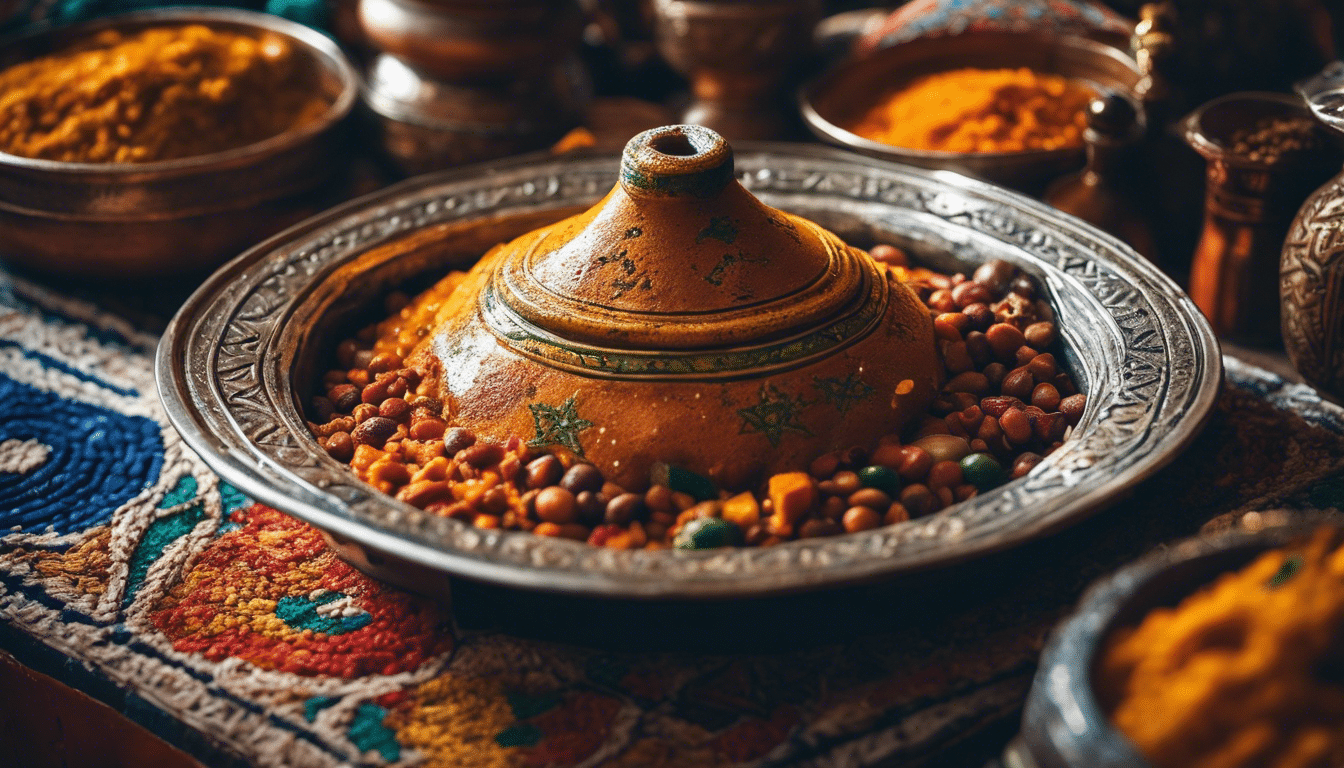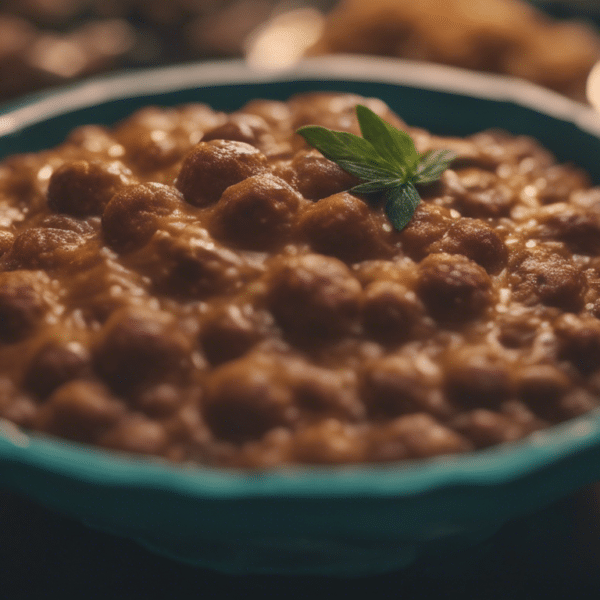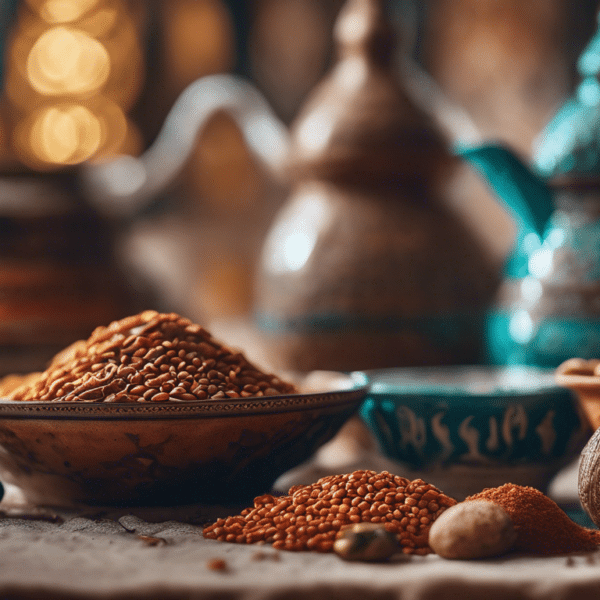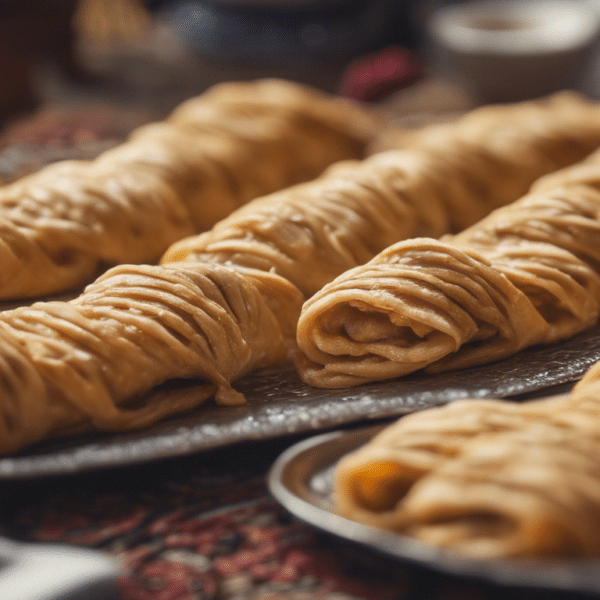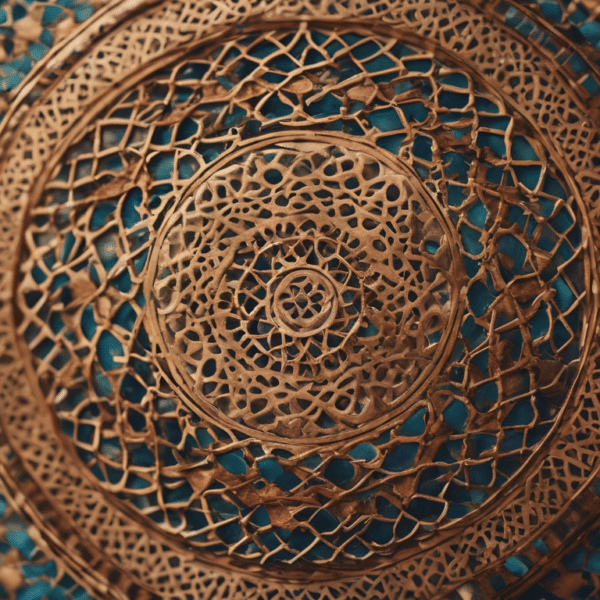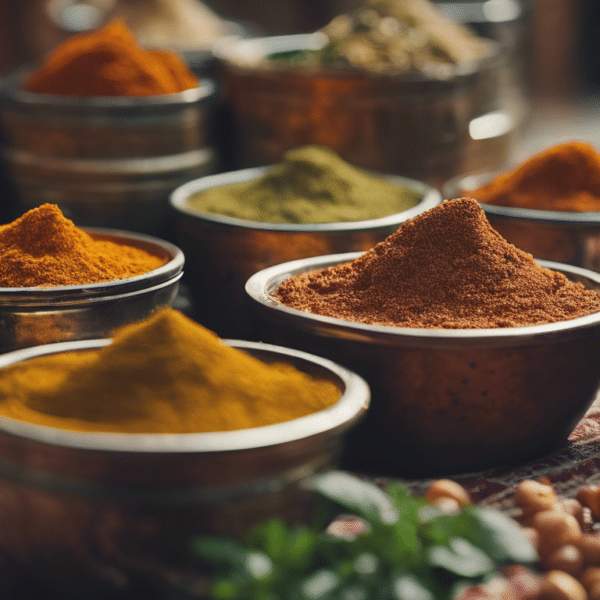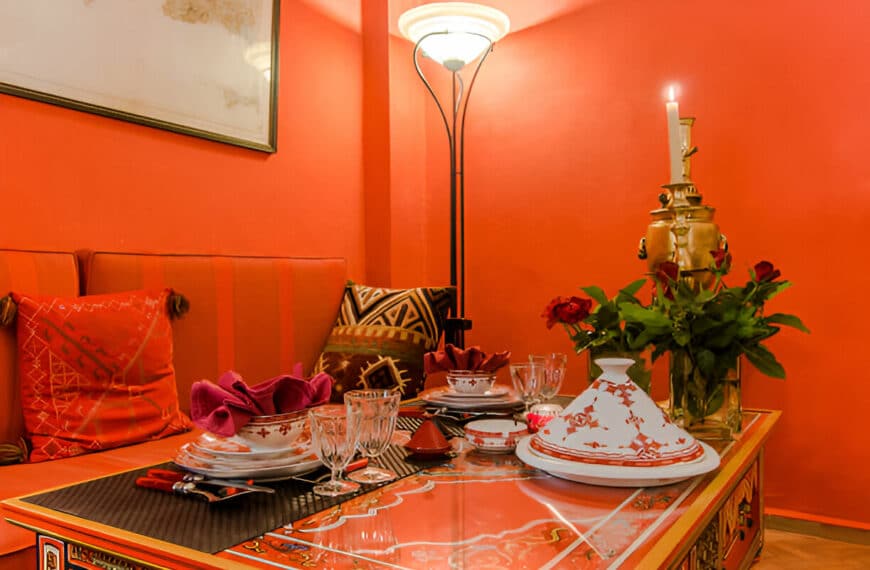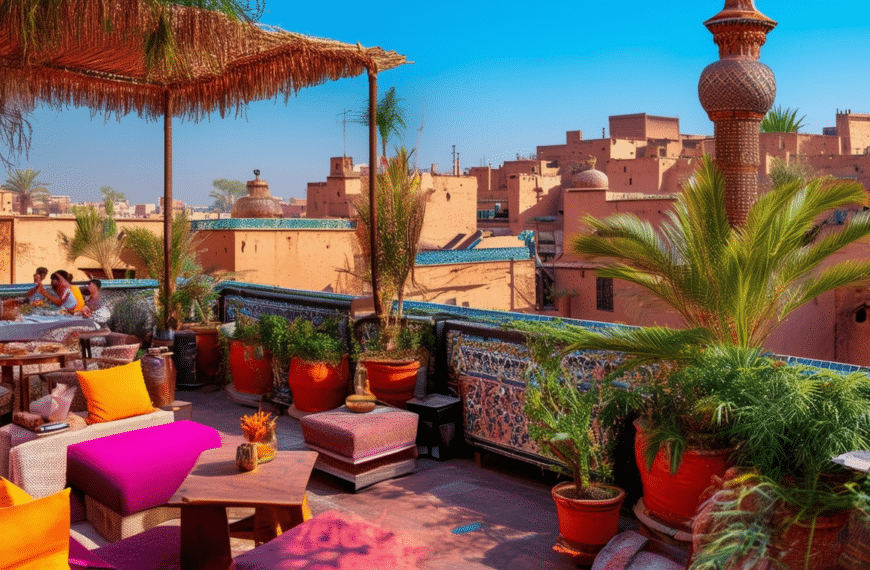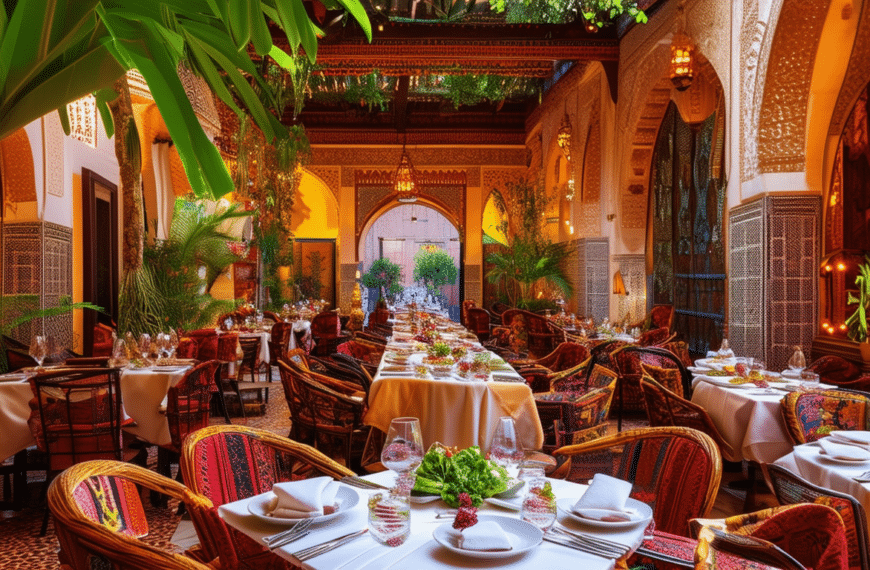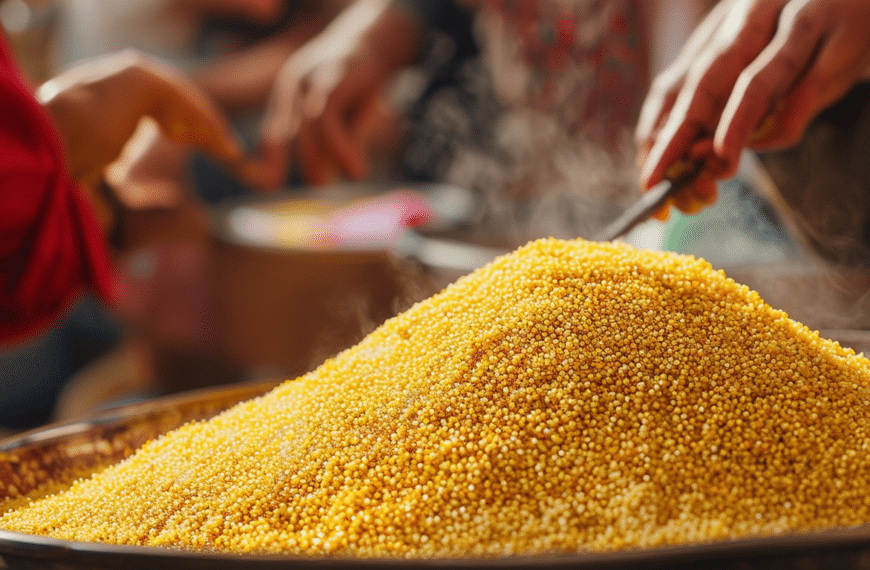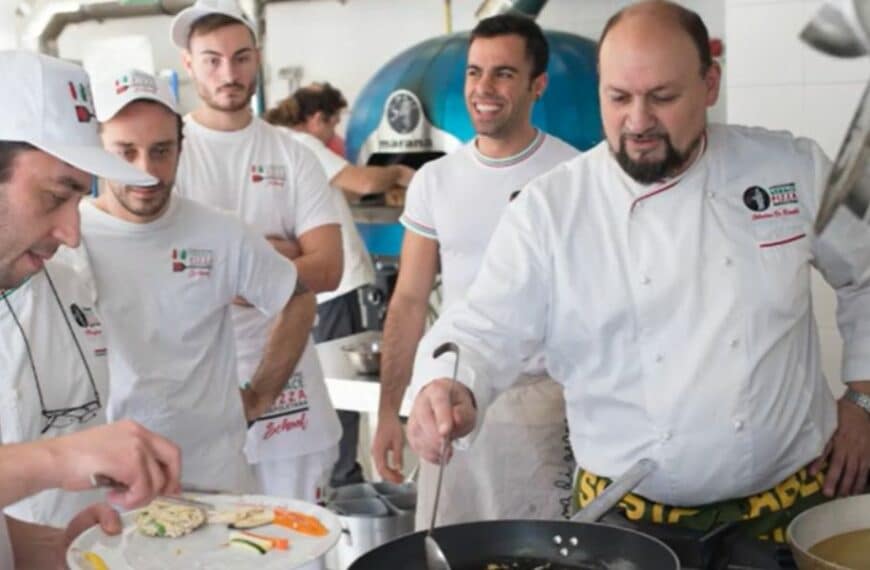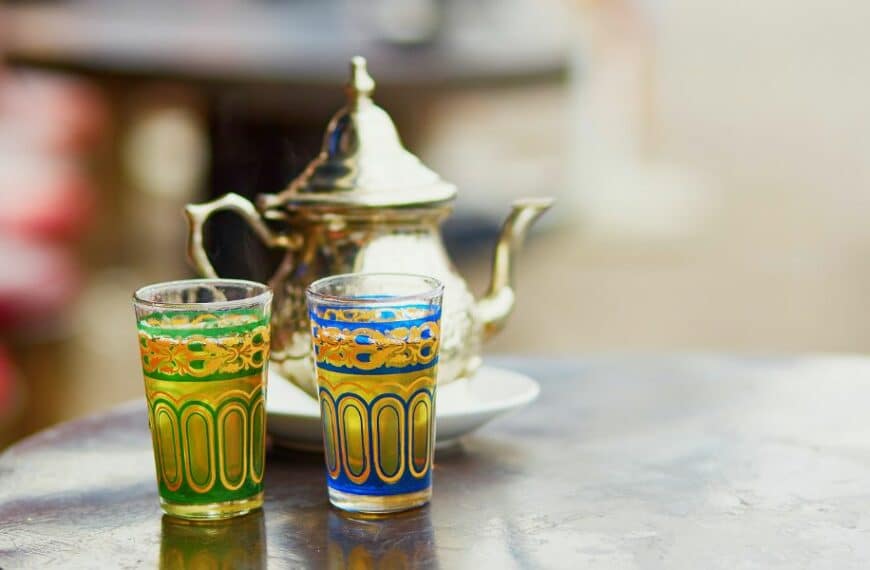Embark on a culinary odyssey and master the art of Moroccan Tagine! Imagine the fragrant fusions of spices and the tender embrace of slow-cooked indulgence. This isn’t just cooking; it’s the weaving of gastronomic tales where every ingredient sings a part of Morocco’s enchanting flavor symphony. Let’s unveil the secrets to transforming your kitchen into a Moroccan chef’s paradise, where epic Tagine creations come to life, inviting you to explore a world where taste becomes an adventure. Join us to discover how you can craft your own Moroccan Tagine masterpieces that are not just meals, but a celebration of culture on a plate. 🍲✨
Unveiling the secrets of Moroccan tagine
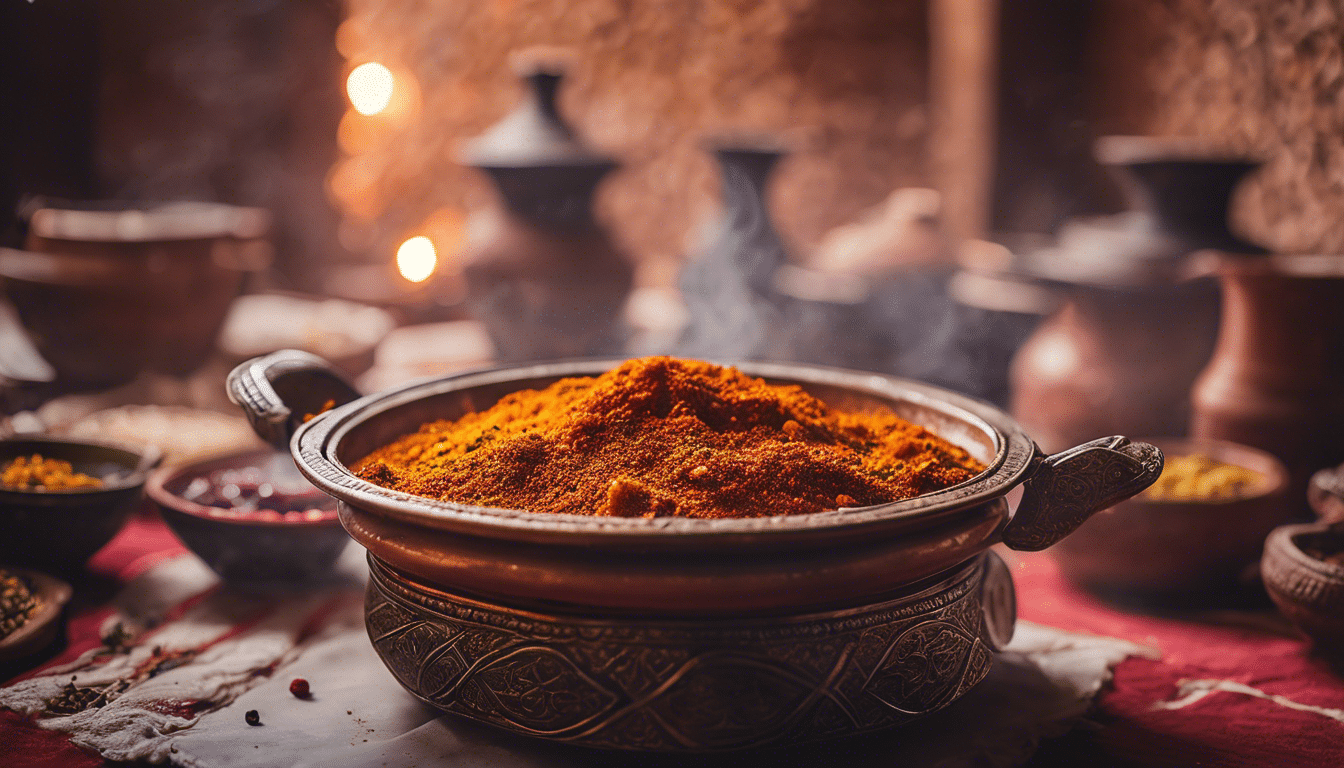
Imagine a culinary masterpiece that has simmered for centuries, its essence locked within the clay walls of its cooking vessel, steeping each ingredient in a history as rich as the spices it marries. This is the Moroccan tagine, not merely a dish, but a tale of flavors waiting to be told.
Moroccan tagine is not just about the satisfying fusion of savory aromas and hearty ingredients; it’s a ceremonial dance of tradition and innovation. I invite you to whisk away the lid and steal a glimpse into this exotic culinary treasure that has captivated kitchens far beyond the simmering souks of Marrakech.
The tagine: clay pot of alchemy
At first glance, the tagine is humble in appearance, a simple clay or ceramic pot crowned with an iconic conical lid. Yet, this unassuming cookware holds the secrets of millennia, a vessel that transforms raw, vibrant ingredients into a symphony of tastes. The unique design of the lid circulates steam and returns the condensed moisture back to the dish, ensuring that meats grow tender, vegetables succulent, and spices meld seamlessly into a luscious blend that woos the palate.
The heart of Moroccan spices
Every Moroccan tagine carries a signature of spices, a distinctive combination that makes each preparation an original experience. Imagine a canvas where saffron threads paint a golden hue, cumin and coriander seeds sprinkle earthy tones, and cinnamon sticks evoke a warm sweetness that lingers on the tongue. These are not just ingredients; they are the melody in the music that is Moroccan cuisine.
– Ras el Hanout: The king of the blend, often encompassing over a dozen spices.
– Saffron: A luxurious touch adding not only color but also a refined flavor.
– Cinnamon: Warm and sweet, bringing depth to dishes.
– Cumin: Earthy and pungent, it is a cornerstone of Moroccan flavor profiles.
– Coriander: Offering a lemony zest, an ideal contrast to the richer flavors.
Meats and vegetal companions
While spices are the essence, the core of the tagine is its protein. Lamb, beef, chicken, or fish, each finds a home within the clay walls, waiting to be transfigured. Paired with a medley of vegetables such as carrots, turnips, potatoes, and tomatoes, the tagine becomes a one-pot feast. However, a bit of patience is mandatory, for the magic happens over slow heat, where the dance of flavors can take their time to unfold.
Unearthing the flavor chronicles
From traditional recipes passed down through generations to contemporary twists that tickle the modern taste buds, Moroccan tagine is a journey through taste and time. As a cook at the helm of a kitchen in a renowned Moroccan riad, the curation of each tagine dish is an homage to the ancestors, a respect to the land, and a nod to the future of culinary arts.
– Classic lamb tagine with prunes and almonds.
– Chicken tagine with preserved lemons and olives.
– Vegetable medley tagine for the herbivores at heart.
– Fish tagine with chermoula, the coastal caress.
A sip of tradition: mint tea pairing
To pair with the richness of a tagine, what could be more quintessential than a cup of Moroccan mint tea? The freshness of the mint, the sweetness of the tea, it’s more than a mere drink, it’s the crescendo to a meal so deeply rooted in culture.
Stepping into the world of Moroccan tagine is akin to embracing a heritage. From the earthenware that cradles the ingredients to the fusion of spices that take you on a sensory voyage, the secrets behind this emblematic dish have been unraveled, yet the discovery is ceaseless. Tagine is a promise of adventure, a heritage wrapped in a warm embrace – one that invites you to savor every morsel and cherish the tale within.
Choosing the right tagine pot
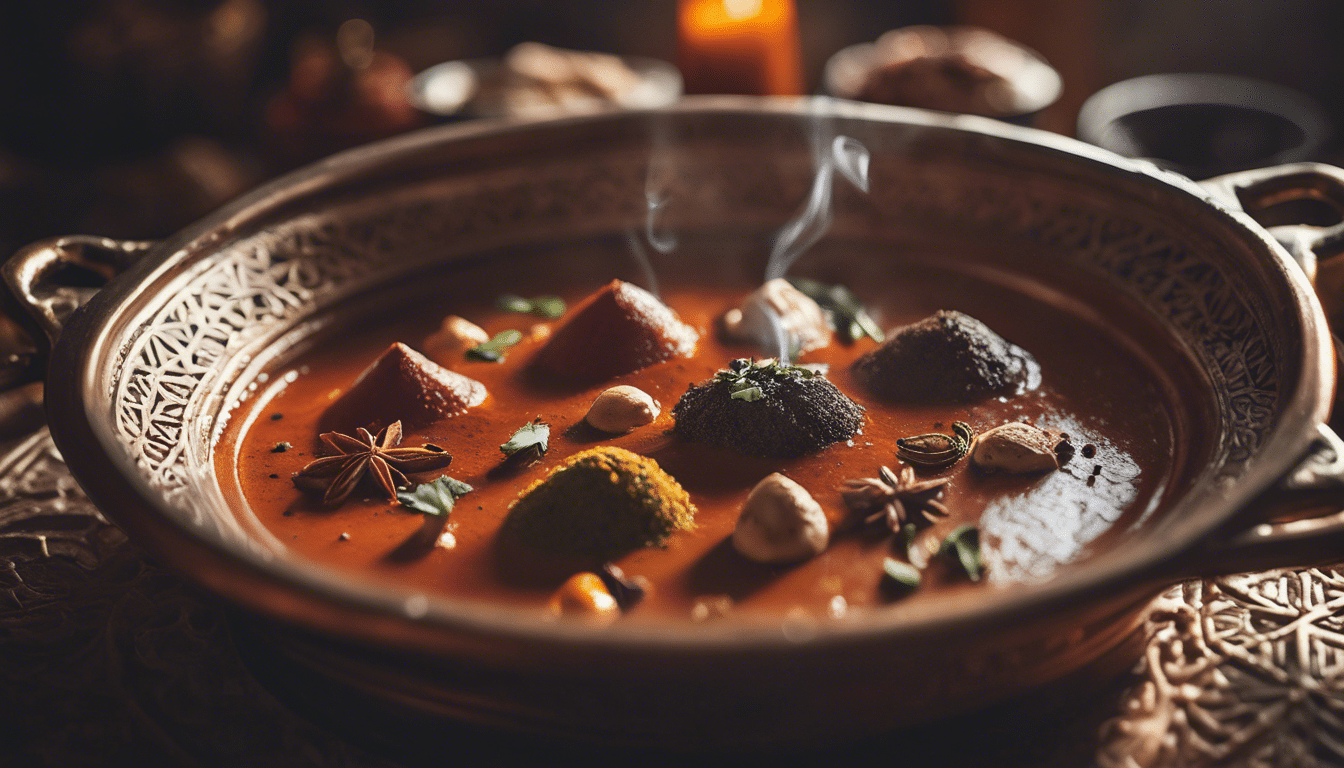
When the whispers of Moroccan cuisine reach your ears, they often carry with them the deep, rich scents of a slow-cooking tagine. This North African delight is not only a sumptuous dish but a journey through culture and tradition, vividly encapsulating the essence of Morocco in each bite. But before you can voyage through the complexities of its flavors, you must set sail with the vessel itself – the right tagine pot.
Selecting Material with Finesse
The material of your tagine pot is not a decision to make lightly; it’s the foundation of your culinary escapade. Traditional tagine pots are fashioned from clay or ceramic – each conducting heat in a caress rather than a rush, welcoming a symphony of spices to meld harmoniously. These authentic pots often require a gentle introduction to heat with a diffuser to protect them from the shock of high temperatures. For the adventurer who prefers a modern twist, enameled cast iron tagine pots offer a sturdy, forgiving alternative fit for various heat sources, including induction stoves.
Size and Depth – Crafting Stories for Every Gathering
When foreseeing the tales your tagine pot will tell, size does matter. Intimate suppers for two dip nicely into smaller sized pots, ensuring your dish remains steeped in its succulent juices. For grander soirées, a larger pot ensures there’s a bounty to go around – take caution, however, for a larger pot demands mastery to prevent the arid fate of a dried-out tagine. Depth too plays its role; a deeper pot cradles more ingredients and liquid, weaving complex narratives of taste with each layer.
Form Meets Function – The Lid’s Tale
Ah, the conical lid – it’s not just an ornate hat for your pot; it’s the crowning glory that captures and returns the heart of the dish. As heat rises in the tagine, the unique shape of the lid captures the condensation and circulates it back into the dish, a continuous kiss of flavor. Ensure the lid sits snug with its partner, the base – for it is in this union that the magic of the dish is preserved.
The Shape of Aesthetics – An Artistic Delight
While efficiency hails high, the beauty of your pot should never be overlooked. Moroccan tagine pots are often embellished with vibrant designs and colors, reflective of the rich Moroccan culture. Select a pot that not only sings in your kitchen but also adds drama to your dining table. A feast after all, is a treat for all senses.
Caring for Your Companion
Upon selecting the tagine suited for your culinary canvas, remember it’s a relationship needing nurture. Before its first enactment, season your clay or ceramic pot by soaking it in water and then baking it empty. This will strengthen its character, ready for the many performances to come. A cast iron pot may require a dab of love with oils before it debuts on your stove or in your oven. Be sure to never invite a cold pot onto a hot stage; a gradual warmth will ensure a longstanding partnership.
A tagine pot is more than a cooking tool; it’s a storyteller, a keeper of secrets, waiting to imbibe its contents with tales of faraway lands and enduring traditions. As you cradle your tagine of choice, know this: armed with the right vessel, the tales of Moroccan feasts you will conjure have only just begun.
Essential spices and ingredients for authentic flavors
Imagine the hustle and bustle of a Moroccan souk, the air redolent with the scent of spices that tell tales of ancient caravans and timeless culinary secrets. At the heart of these fragrant narratives is the iconic Moroccan Tagine, a dish that encapsulates the soul of Moroccan cuisine. As a seeker of genuine flavor and a curator of kitchen adventures, let’s embark on a journey to unearth the spices and ingredients that lend Moroccan Tagine its enchanting taste.
Unlocking the Aromatic World of Tagine Spices
Step into my realm, a kitchen brimming with the essence of Morocco, where each spice is a character in an epic gastronomic play. A traditional Moroccan Tagine is a symphony of flavors where each note matters. To delve into authenticity, one must employ the most harmonious of spices.
Cumin, with its earthy warmth, is indispensable; it caresses the palate and lays the foundation. Cinnamon follows with a sweet, woody embrace, adding a gentle depth that whispers of North African charm. Ginger, the bold and spicy confidante, offers a fiery kick, concocting a narrative of far-off lands.
Then there are the supporting characters that should never be overlooked: Coriander brings its lemony zest, Paprika with its sweet-pepper glow, and Turmeric, the golden touch that paints the canvas of our Tagine with shades of sunset.
The Canvas: A Medley of Fresh Ingredients
The stage is set, but what of the actors, the flesh, and bones of our savory tale? The majesty of the Tagine lies in its hearty assembly of fresh ingredients. Plump, ripe tomatoes meld into a luscious base, their juices enlivening the stew. Onions, the unsung heroes, offer a sweet, aromatic backdrop against which the spices dance.
A mélange of vegetables – carrots for sweetness, zucchinis for their lush green notes, and bell peppers for a vibrant, colorful crunch. And let us not bypass the soulful olives, often green, briny with a backnote of piquant delight, or the prunes and apricots that weave in a tapestry of sweet tanginess.
Of course, the pièce de résistance, be it succulent lamb, tender chicken, or robust beef, cut into generous chunks, ready to absorb the essence of our spice-laden narrative. And don’t forget the chickpeas, offering sustenance and texture, a humble ingredient that holds its own.
Parsing the Herbs: Subtle but Mighty
Amidst the orchestra of spices, don’t let the understated elegance of herbs go unheard. Parsley and cilantro are the green duet whose refreshing aromas pirouette through the layers of flavor. A final flourish, a scattering akin to emerald jewels, they uplift and brighten the dish’s robust heart.
Liquid Gold: The Role of Fats and Oils
No Tagine could ever reach its zenith without the right touch of fat. Olive oil, liquid gold that binds the realms of spice and earth, adds a fruity, peppery sheen, a whisper of rustic luxury. For those who walk the path of indulgence, a knob of butter enriches, creating a liaison between ingredients, an unctuous alchemy that makes every bite soulful.
In understanding the core elements that compose the genuine Moroccan Tagine, recognize that balance is the key – a harmony of herbs, a careful calibration of spices, and a reverence for fresh ingredients and fats that unite to tell the story of Morocco on a plate. Whether you wield the spatula seeking the essence of Marrakesh or yearn for a taste that transports, embracing these elements is your route to a mystical culinary experience. Bon voyage and bon appétit.

